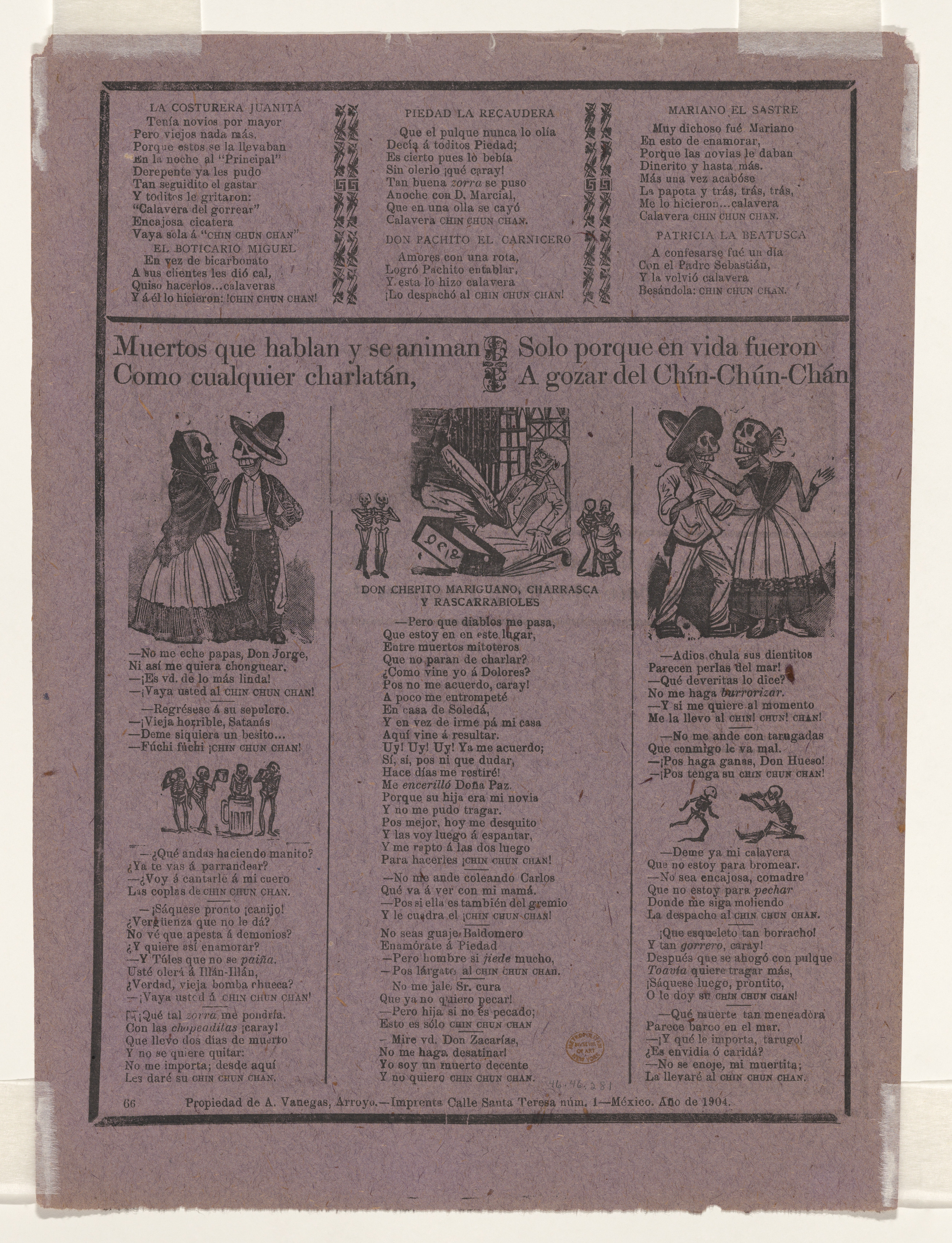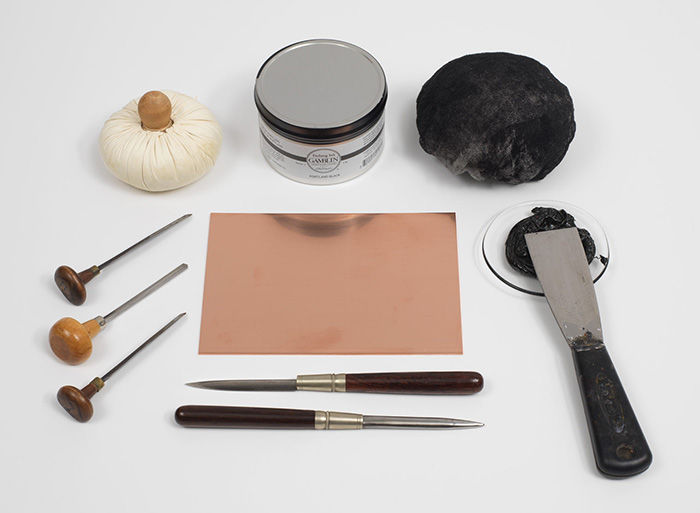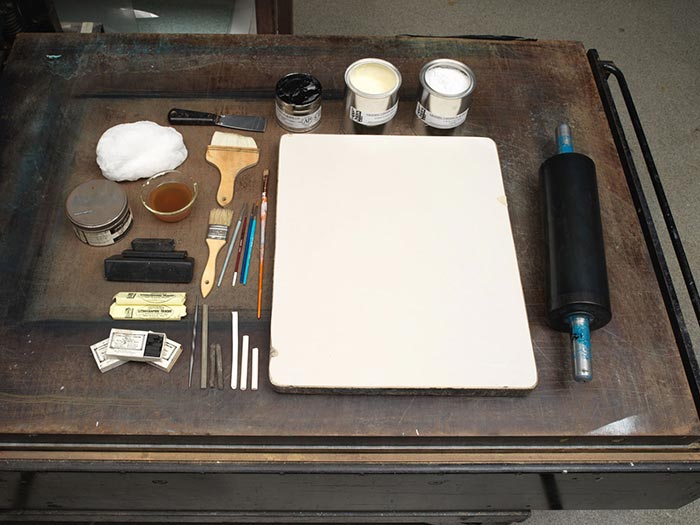Broadsheet relating to the great skeleton of the Chin-Chun-Chan
Not on view
The musical comedy (zarzuela) Chin-Chun-Chan: Chinese conflict in one act and three parts opened at Mexico City’s Teatro Principal on April 9, 1904. It conveyed anti-Chinese sentiments that emerged after President Porfirio Díaz allowed Chinese workers to enter Mexico through an 1899 treaty. Capitalizing on the play’s popularity, Vanegas Arroyo published this broadsheet describing the misfortunes of fictional working-class Mexicans. Blocks were often reused in his workshop; the skeletons on this double-sided sheet were created by three artists at different times.
La zarzuela Chin-Chun-Chan: conflicto chino en un acto y tres cuadros se estrenó en el Teatro Principal de Ciudad de México el 9 de abril de 1904. Expresaba los sentimientos antichinos que afloraron en México cuando el presidente Porfirio Díaz permitió a los trabajadores chinos entrar en el país como resultado de un tratado suscrito en 1899. Aprovechando la popularidad de la obra, Vanegas Arroyo publicó este volante en el que se describían los infortunios de mexicanos ficticios de clase obrera. En el taller se reutilizaban constantemente los bloques: las calaveras elegantemente vestidas de esta lámina a doble cara fueron creadas por tres artistas en momentos diferentes.
This image cannot be enlarged, viewed at full screen, or downloaded.
This artwork is meant to be viewed from right to left. Scroll left to view more.





